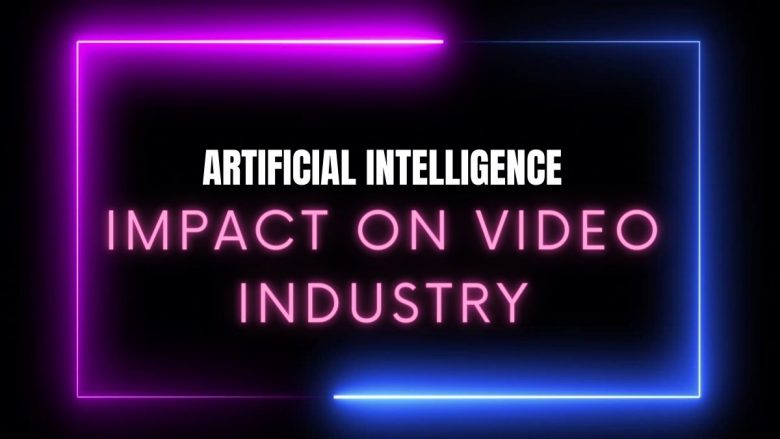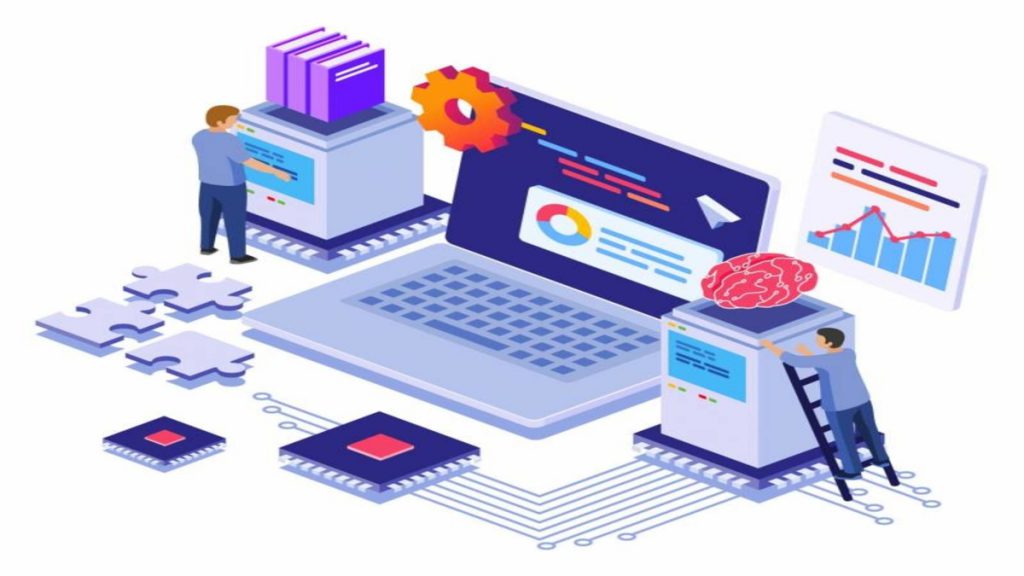
Artificial intelligence (AI) has evolved from a purely academic concept to a critical technology for businesses in all industries. In the video industry, for example, artificial intelligence has become a powerful tool for content analysis, automatic editing, and personalized recommendations.
Artificial intelligence-powered content analysis can assist in identifying the topics covered in a video as well as the emotions expressed by the people in the video. This information can help to improve the video content and make it more appealing to viewers.
Furthermore, AI can edit videos by identifying the most important parts of a video and creating a summary automatically. By reducing manual editing, businesses can save time and money.
But first, what exactly is Artificial Intelligence (AI)?
The term “artificial intelligence” (AI) refers to technology that closely mimics cognitive processes such as learning, reasoning, comprehension, and problem-solving. AI can process massive amounts of data at breakneck speed, allowing people to discover new insights in areas where humans are limited, such as image recognition.
AI has already transformed numerous industries around the world, including the video industry. In this article, we will look at how Artificial Intelligence is changing the video industry.
The Impact of Artificial Intelligence on the Video Industry
Artificial intelligence is changing the video industry in three ways: content analysis, automatic editing, and personalized recommendations.
Analyze the Content
AI can be used by businesses to analyze video content to determine its topic and sentiment. In addition, AI can recognize other important elements such as people in the video, objects shown, and any text or speech.
One example is a project called “Data.gov” launched by Barack Obama’s Open Government Initiative, in which several AI technologies were used to analyze videos of the president’s speeches.
It is now possible to search for specific words in presidential speeches and find relevant video clips using this technology. This makes it easier for researchers to study these speeches.
Another example of content analysis is AI detecting and identifying where a video was shot, who is featured in the video, and what is shown.
AI can identify people by comparing their faces to a pre-existing database, and it can also determine objects based on their appearance. For example, using AI to analyze the content of instruction videos published on Facebook (breadnbeyond dot com/training videos) allows businesses to learn about consumer preferences and behavior. This can assist businesses in producing more relevant and targeted content.
Editing by Machine
After the world announced the use of AI in the media industry, editing videos has never been easier. AI assists in video editing by automatically identifying the most important parts of a video and creating a summary. By reducing manual editing, businesses can save time and money.
Google’s “Photos” application, for example, uses AI to create photo albums automatically by identifying the best photos from a set of photos.
Recommendations tailored to you
Viewers can also receive personalized recommendations from AI. AI can recommend videos that are likely to be of interest by analyzing viewers’ viewing habits. This can help businesses increase the number of people who watch and interact with their videos.
Netflix is a great example of how personalized recommendations can help increase viewer engagement. To recommend videos that are likely to interest individual viewers, Netflix employs a “Personalized Recommendations” system.
Netflix’s algorithm takes into account viewers’ viewing habits as well as ratings and reviews. This allows Netflix to recommend videos that are likely to be of interest to specific viewers.

The Role of Artificial Intelligence in Transforming the Video Industry
Artificial intelligence has the potential to transform the video industry by assisting businesses in creating better content while saving time and money. AI is transforming video editing and production in a variety of ways.
Video editing is becoming more automated, and videos are being summarized. Furthermore, AI provides personalized recommendations to viewers, increasing video engagement.
A more in-depth look at how AI is influencing video production and editing, as well as viewership, is provided below.
1. Video Enhancement
To begin with, many companies have used AI to automatically edit content such as videos in a short period of time, saving businesses time and money.
Today, you can see the rise of automated video editing software such as Magisto, Vimeo’s Dolly, Adobe’s Premiere Pro CC 2018, and others in a variety of industries. These applications have grown in popularity due to their ease of use and ability to produce high-quality videos without the need for complex manual editing.
Furthermore, they can create video edits in far less time than manual editing previously allowed. This is a benefit that increases the value of such software for businesses, as it may be easier and less expensive to create multiple iterations of videos using AI rather than doing so manually.
2. Summarizing Videos
AI can also summarize videos for the viewer, which saves time in another way. AI can help identify essential parts of a video and create a summary, making it possible to summarize your piece. For the past year, Facebook, for example, has been using AI to summarize videos.
The company’s “AutoPlay” feature summarizes a video into a few sentences that are displayed as text before the video begins playing.
The goal is to give users a quick overview of the video before allowing them to decide whether or not to watch it in its entirety. The company hopes that this will increase viewership by eliminating the need for viewers to watch an entire video to obtain information.
3. Curation of video
AI assists in the curation of videos for the viewer by making personalized recommendations. For example, the technology will analyze the viewer’s viewing habits and recommend videos that are likely to be of interest to the viewer.
Streaming services such as Disney+ have been using AI for this purpose for a number of years. The company’s “Top Picks For You” feature recommends similar or related content based on what viewers have watched. The company employs AI to generate images from described videos as well as subtitles from those same videos.
4. Visual Detection
Artificial Intelligence (AI) can also be used by businesses to recognize objects in videos. AI will deal with image recognition and interpretation via computer vision, making things possible.
For some time now, Facebook has been using this technology to help identify people in videos and context clues such as the type of event that is taking place.
With the development of “Clear History,” which allows viewers to delete videos they’ve watched from their viewing history, the company has recently entered the video editing space. Furthermore, AI detects visual data within videos using computer vision, allowing Facebook to determine what content users have viewed and delete it accordingly.
This feature will be especially useful for businesses, as marketers will be able to use it to assess the effectiveness of their videos.
5. Production of Video Content
AI can be used by businesses to improve video content and make it more relevant to viewers. Machine learning, along with computer vision and natural language processing (NLP), enables AI to play a role in the video. AI, for example, can use computer vision to identify objects and scenes in a video.
AI can then use this data to generate metadata that can help improve the searchability and comprehension of videos. NLP, for example, can help make videos more accessible by adding closed captions from the spoken words in a video.
For example, artificial intelligence was recently used to add closed captions to thousands of Twitter videos in order to make them more accessible.
Artificial Intelligence’s Role in the Video Industry
While the use of AI is becoming more common for businesses in a variety of industries, video offers unique opportunities in this space. This is due to the fact that videos contain a wealth of rich data, making AI-generated insights more valuable than other types of content.
Furthermore, they can generate metadata that will aid in searchability. Using machine learning techniques, they can, for example, provide personalized recommendations, summarize videos, and create customized thumbnails. As a result, businesses will almost certainly continue to use AI to expand their operations.
Conclusion
As technology advances, the role of artificial intelligence (AI) in video production and editing expands. Because of its ability to save time and money, it is a valuable tool for businesses. Additionally, AI assists in providing personalized recommendations to increase viewership.
AI can also be used by businesses to generate personalized recommendations for viewers. AI can recommend videos that are likely to be of interest by analyzing viewers’ viewing habits. This can help businesses increase the number of people who watch and interact with their videos.
In short, Artificial Intelligence has the potential to revolutionize the video industry by assisting businesses in creating better content, saving time and money, and increasing viewer engagement. Furthermore, its use for recognizing objects in videos is assisting in the improvement of video editing accuracy. Because of these factors, Artificial Intelligence has become an essential component of the video industry.
Learn more from Artificial Intelligence and read AI in music: Bach, Beethoven, and the bots.



One Comment